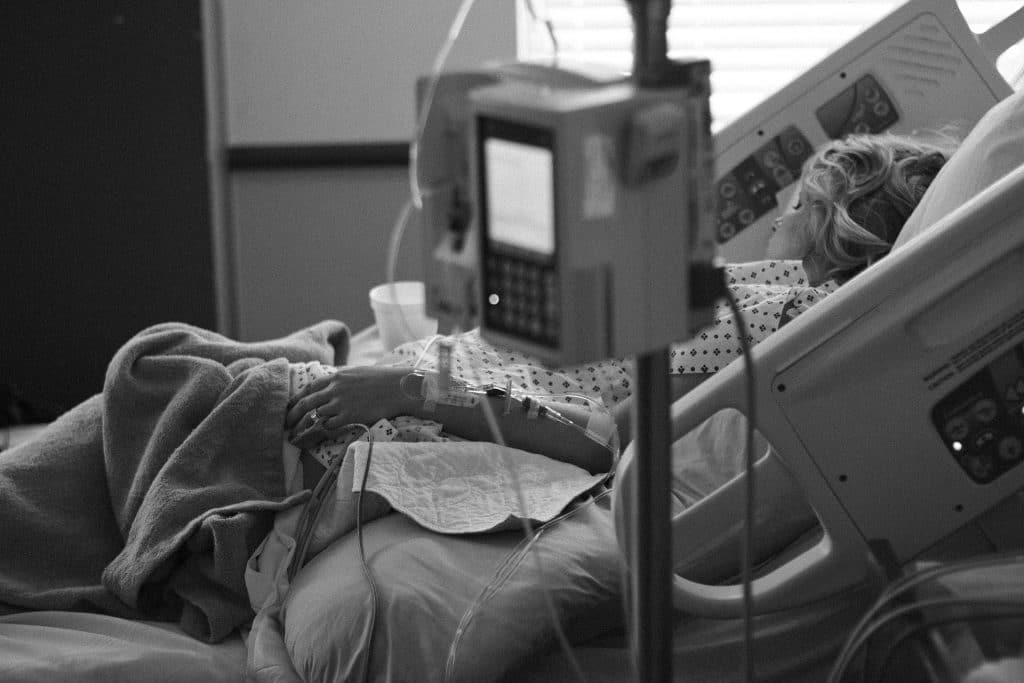What are the basic things to know about providing CPR for pregnant women?
-
Normal biological changes that occur in a woman’s body during pregnancy
- Cardiovascular
- Respiratory
-
Steps to follow when providing CPR to a pregnant woman
- Check Airways
- Displace the Uterus
- Provide Compressions
-
Needed care after resuscitation
- Airways
- Breathing
- Circulation
-
Emergency Evacuation
Giving first aid, specifically cardiopulmonary resuscitation or most commonly known as CPR, is a serious task and must be executed properly. More so when it is applied to special cases such as infants and pregnant women.
A pregnant lady may be required to be provided with CPR for various reasons, some of which are due to sudden cardiac arrest or unresponsiveness after choking. Due to their delicate condition, pregnant women are provided with a varying way of administering CPR. That’s why by undergoing a CPR training class, you can learn the various CPR techniques that are applicable to these diverse conditions.

Biological Changes That Happen to a Pregnant Woman’s Body That Can Influence Regular Resuscitations
Here are several reasons why pregnancy is a delicate condition:
-
Cardiovascular
During pregnancy, a woman may develop physiological anemia. Such conditions occur because the blood volume increases at a higher percentage than the increase in red blood cells.
In order to regulate the vast volume of blood, the heart rate of pregnant women hikes by 15%.
-
Respiratory
Similar to the cardiovascular system, a woman’s respiratory system also varies from a woman’s usual circulation. In order to provide oxygen to both the fetus and the mother, a woman’s oxygen consumption increases by 20%.
In relation to the biological changes of a pregnant woman, specifically the cardiovascular system, the increase of blood volume can result in vascular engorgement. This condition is the root of swelling of the airway and possible displacement of the trachea.

Steps in Administering CPR to a Pregnant Woman
Assess Airways
Just like regular CPR, the aid given to adults who are not pregnant, the initial step is to assess the airways, breathing, and circulation. This step is a standard operating procedure that is surely taught during CPR training.
Displace the Uterus
In order to lessen the aortocaval compression, the uterus must first be displaced. There are two possible ways to displace the uterus. The first one is by placing a rolled towel under the right hip of the woman. This will pull the uterus towards the left side of the body. However, this technique in displacing the uterus can lessen the effectiveness of chest compressions due to the tilted position of the shoulders.
The second technique is the manual pulling of the uterus towards the left side. With this technique, it is greatly recommended that two people will perform CPR, most especially for pregnant women. This is better so that one would secure the position of the uterus while the other perform compressions.
The proper depth of compression is important to ensure that the force is not too strong or too weak. Learning the accurate compression strength and depth can be done through enrolling in CPR and first aid certification online.
Begin Compressions
The initial compressions would not yet require rescue breaths to be administered. The compressions will secure that oxygenated blood flows through the major veins. After 30 consecutive compressions, immediately follow up with two rescue breaths.

After Resuscitation Care
The delivery of aid does not end after the patient is resuscitated. Another standard operating procedure in CPR for pregnant woman are the aftercare ABCs, which are as follows:
Airway
Even after resuscitation, a pregnant woman remains at high risk for aspiration of gastric contents. The intubations must remain connected to the woman until she is entirely conscious and can manage to breathe on her own.
For further assessment of the condition of her respiratory tract, it is best to have an X-ray taken.
Important Facts About Airway Modification:
- Proper basic life support can provide better ventilation, chest excursion, and oxygenation.
- Advanced airway placement is crucial for a maternal cardiac arrest case, that is why the preparation must be done properly and thoroughly.
Breathing
Double-check if spontaneous respiration reoccurs and if there is a need for adequate ventilation. A pregnant woman would normally need to be intubated for a certain time period after resuscitation. The added mechanical ventilation maintains and regulates the arterial blood gas values for the pregnant woman. If there is respiratory distress, immediately determine and provide the necessary aid.
Points to monitor regarding a patient’s breathing:
- Ensure proper oxygenation and avoid desaturation
- The occurrence of respiratory alkalosis must be avoided
- Adjust down the volumes of ventilation
- Make sure to prevent aspirations
Circulation
Continuously monitor the cardiac rhythm and assess the vital signs. Other things to continuously monitor are fluid status, blood count, and electrolytes. In addition, it is also important that one’s urine is tested to use as an indicator of possible organ perfusion.

Emergency Evacuation
In the event that a pregnant woman does not regain consciousness after chest compressions, the baby will be immediately removed by cesarean section.
Key Takeaway
Given all these things, it is indeed true that pregnant women are delicate due to their current condition. In the event that a pregnant lady would require CPR and other medical help, the aid provided must be firm to ensure a successful aid, yet gentle due to the sensitive nature of the patients.
For further knowledge and even skill development, enroll in a CPR first aid certification today!










